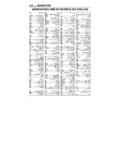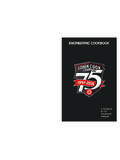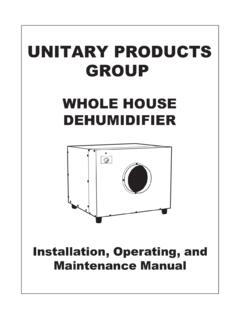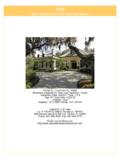Transcription of COMMON HOUSEHOLD APPLIANCE ENERGY USE
1 COMMON HOUSEHOLD APPLIANCE ENERGY USE Listed below are some COMMON appliances , their typical or average wattage and an estimated kilowatt. There is also a simple formula for calculating operating costs below. APPLIANCE Watts Hours/Mo kWh/Mo Air Conditioner (Room) 6,000 BTU 750 120 730 90 548 Air Conditioner (Central) Tons 3500 240 -730 1 47 Ceiling Fan 65 15 730 1 -47 Clock 5 730 4 Clothes Dryer 5000 6 28 30 140 Clothes Washer, Automatic (With Electric Water Heating) 1800 7 -40 13 -72 Clothes Washer, Automatic (With Non-Electric Water Heating) 500 7 -40 4 20 Coffee Maker 900 4 30 4 27 Computer (Monitor & Printer) 200 25 160 5 32 Crock Pot 250 8 24 2 6 Dehumidifier 350 120 730 42 256 Dishwasher (With Electric Water Heating) 1500 8 40 12 60 Dishwasher (With Non-Electric Water Heating) 400 8 40 3 16 Drill 300 3 7 1 2 Electric Blanket 180 30 90 5 16 Electric Heater (Portable) 1200 30 90 36 108 Fan (Portable)
2 115 18 52 2 6 Food Blender 390 3 5 1 2 Food Freezer (15 cu. Ft.) 335 180 420 60 141 Frying Pan / Hot Plate 1150 10 20 12 23 Furnace Fan Motor (Intermittent) 350 160 415 56 145 Furnace Fan Motor (Continuous) 350 730 256 Heating Pad 65 15 30 1 2 Heat Tapes 200 250 500 50 100 Humidifier (Portable) 100 80 540 8 -54 Iron (Hand) 1000 1 10 1 10 Lighting Single Lamp (60W) 60 17 200 1 -12 Compact Fluorescent (60W Equiv) 18 17 200 3 -4 Ceiling Fixture (3 bulbs) 180 6 195 1 35 Tri-Light (Table Lamp) 100 10 200 1 -20 Chandelier (5 Lamp) 300 10- 183 3 55 Fluorescent (2 Tube 4 ft) 100 10 -200 1 -20 Microwave Oven 1000 5 30 5 30 Power Saw 275 2 4 6 1 Range 1250 10 50 125 625 Range (Self Cleaning Cycle Only) 3200 1 3 Refrigerator Freezer Frost Free (17 cu.)
3 Ft.) 500 150 300 75 150 Refrigerator (Non Frost Free (13 cu. Ft.) 300 190 300 57 90 Sewing Machine 75 4 -14 3 1 Stereo 30 1 170 .03 5 Television 27 Color or Flat Screen 120 60 440 7 53 Television 53 61 Projection Screen 170 60 440 10 75 Toaster 1150 1 1 -4 Toaster Oven w/broiler 1350 4 10 5 -14 Vacuum Cleaner (Portable) 800 2 6 2 5 Vehicle Headbolt Heater (Medium)* 1000 60 243 60 243 Vehicle Headbolt Heater (large car or truck)* 1500 60 243 90 365 Video Cassette Recorder / DVD 40 50 200 2 -8 Water Bed Heater 400 150- 300 60 120 Water Heater Typical Family of 4 3800 100 -1 50 380 570 Water Pump (Deep well moderate power) 500 10 50 5 25 Water Pump (Dee p well higher powered) 1100 10 -50 11 -55 A 100 watt bulb burning 10 hours uses only (1) kW.
4 In order to calculate the average operating cost for any electrical APPLIANCE you can use the following formula: watts 1000 = kW x hours of operation = kWh x kWh rate = cost Watts can usually be found on the APPLIANCE nameplate. If the nameplate lists amp: volts x amps = watts Example: How much does it cost to operate a portable electric heater? Wattage is usually given on the unit itself, or with the literature that comes with it. Our example is 1000 watts. For working purposes, let s say you use the heater an average of 45 hours during winter months (1/2 hour per day for the three coldest winter months) and that the electric rate is $.10 per kWh hour. To calculate for an 8 amp heater, the formula changes just a bit. 8 amps x 120 volts HOUSEHOLD current = 960 watts/1000 = .96 kW x 45 hours = $43.
5 2 kWh x $ = $ *Even in the coldest weather a vehicle only needs to be plugged in for two (2) hours. Member Information Bulletin Customer Test for Shorts, Shocks, and High Bills MEA recommends that a member arrange to have a qualified electrician check their electrical wiring should there be an indication of a short circuit or shocks. However, there are a few checks the homeowner can make: Step 1: Turn off all circuit breakers, including the mains, usually found directly below the meter. The meter should slow down and come to a complete stop. Step 2: With all circuit breakers off, turn on the mains. The meter should remain stopped. If the wheel turns even slightly, this would indicate some leakage between the mains and the circuit panel. CALL YOUR ELECTRICIAN. Step 3: With the mains on, proceed to turn each circuit on separately.
6 If one should make the meter move, determine what that circuit is for and unplug any appliances . If the meter still turns, this could be an indication of a partial short. Whenever the wheel in your meter is turning, it indicates electrical current is flowing somewhere. Step 4: If all the circuits appear to be correct at this point, high use or shocks could be caused by faulty appliances . Check anything that works automatically, such as water pumps, water heater, heat tapes, freezers and small room heaters. Other things to consider are frost build-up in wall outlets and switches, uninsulated hot water pipes, anti-sweat valves on toilets that can cause excessive use of hot water, or anything that has recently not been functioning as it should. Not all electrical problems are easy to find.
7 If you have any further questions on any of the above, call your electrician or one of our district offices. Big Lake Palmer Mile Parks Hwy 163 E. Industrial Way 892-7398 or 761-9450 745-3231 or 761-9300 From Anchorage: 689-9450 From Anchorage 689-9300 Eagle River Wasilla 11623 Aurora St. Creekside Plaza, Suite A-130 694-2161 or 689-9600 376-7237 or 761-9500 From Mat-Su: 761-9600 From Anchorage: 689-9500 ENERGY SAVING TIPS 1.
8 Turning down the thermostat 6 degrees can save up to 20% of your heating bill. 2. Moving furniture away from warm air registers gives a more even room temperature. 3. Open drapes on sunny days to allow warmth from the sun: close them at sundown. 4. Use lines or insulated drapes on windows. 5. Turn off the lights when not in use. 6. Keep light bulbs and fixtures clean. 7. Use one 100-watt bulb instead of two 60-watt bulbs. 8. Use florescent fixtures when possible. 9. Keep water heater temperature at the lowest recommended setting. (120-140 degrees) 10. Correct leaking faucets. 11. Use cold water whenever possible. 12. Don t leave faucets running. 13. Turn off electric ranges immediately after use. 14. Use a steamer or pressure cooker when possible for faster cooking.
9 15. Don t open the oven door unnecessarily. 16. Thaw frozen food ahead of time. 17. Use the self cleaning feature of your oven while the oven is still warm. 18. Use high heat only to start the cooking process. 19. Buy manual defrost refrigerators when possible, rather than self-defrosting. 20. Defrost refrigerator when frost is one quarter inch thick. 21. Vacuum cooling coils beneath or behind refrigerator at least every month. 22. Check gaskets occasionally on refrigerators and freezers. 23. Do not open the refrigerator door more than necessary. 24. If buying a freezer, select a chest type. 25. Cool leftovers before refrigerating. 26. Buy multi-door units on refrigerators whenever possible. 27. Use dishwashers for full loads only. 28. Stop the dishwasher before the dry cycle begins and air dry the dishes.
10 29. Select a clothes washer large enough to handle big loads. 30. Use cold water to wash clothes. 31. Use the soak cycle on heavily soiled clothes to prevent double washing. 32. Clean lint filters on clothes washer and clothes dryer often. 33. Place your clothes drying where it gets plenty of ventilation . (Non-humid air). 34. Dry clothes outside whenever possible. 35. Be sure and vent your dryer when possible to the outside air. 36. Hang clothes immediately to prevent ironing. 37. Do all ironing at once to avoid heating the iron several times. 38. Unplug all appliances or drop cords that are seldom used. 39. Walk around and unplug all duplicate appliances , for example two alarm clocks. 40. Try to run HOUSEHOLD appliances during non-peak time periods. COMMON HOME PROBLEMS and SOLUTIONS Is your home cold, drafty, or uncomfortable?







